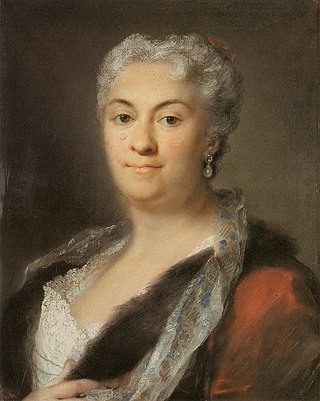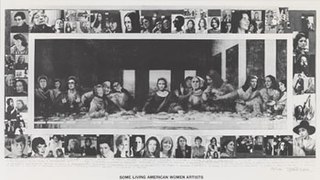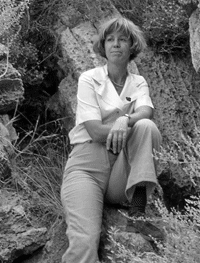
Nancy Graves was an American sculptor, painter, printmaker, and sometime-filmmaker known for her focus on natural phenomena like camels or maps of the Moon. Her works are included in many public collections, including those of the National Gallery of Art, the Brooklyn Museum of Art, the Smithsonian American Art Museum, the National Gallery of Australia (Canberra), the Des Moines Art Center, Walker Art Center (Minneapolis), and the Museum of Fine Arts. When Graves was just 29, she was given a solo exhibition at the Whitney Museum of American Art. At the time she was the youngest artist, and fifth woman to achieve this honor.

Robert Stackhouse is an American artist and sculptor.

A.I.R. Gallery is the first all female artists cooperative gallery in the United States. It was founded in 1972 with the objective of providing a professional and permanent exhibition space for women artists during a time in which the works shown at commercial galleries in New York City were almost exclusively by male artists. A.I.R. is a not-for-profit, self-underwritten arts organization, with a board of directors made up of its New York based artists. The gallery was originally located in SoHo at 97 Wooster Street, and was located on 111 Front Street in the DUMBO neighborhood of Brooklyn until 2015. In May 2015, A.I.R. Gallery moved to its current location at 155 Plymouth St, Brooklyn, NY 11201.

The feminist art movement in the United States began in the early 1970s and sought to promote the study, creation, understanding and promotion of women's art. First-generation feminist artists include Judy Chicago, Miriam Schapiro, Suzanne Lacy, Judith Bernstein, Sheila de Bretteville, Mary Beth Edelson, Carolee Schneeman, Rachel Rosenthal, and many other women. They were part of the Feminist art movement in the United States in the early 1970s to develop feminist writing and art. The movement spread quickly through museum protests in both New York and Los Angeles, via an early network called W.E.B. that disseminated news of feminist art activities from 1971 to 1973 in a nationally circulated newsletter, and at conferences such as the West Coast Women's Artists Conference held at California Institute of the Arts and the Conference of Women in the Visual Arts, at the Corcoran School of Art in Washington, D.C..

Lynda Benglis is an American sculptor and visual artist known especially for her wax paintings and poured latex sculptures. She maintains residences in New York City, Santa Fe, New Mexico, Kastellorizo, Greece, and Ahmedabad, India.
The Women's Caucus for Art (WCA), founded in 1972, is a non-profit organization based in New York City, which supports women artists, art historians, students, educators, and museum professionals. The WCA holds exhibitions and conferences to promote women artists and their works and recognizes the talents of artists through their annual Lifetime Achievement Award. Since 1975 it has been a United Nations-affiliated non-governmental organization (NGO), which has broadened its influence beyond the United States. Within the WCA are several special interest causes including the Women of Color caucus, Eco-Art Caucus, Jewish Women Artist Network, International Caucus and the Young Women's Caucus. The founding of the WCA is seen as a "great stride" in the feminist art movement.
Cecilia Roser, who works under the name Ce Roser, was born in Philadelphia, Pennsylvania in 1925. Roser has been active in New York City as an artist since the 1960s. Ever since childhood, Roser had been painting and drawing. While studying in Berlin, Roser learned of a female artist named Käthe Kollwitz. Kollwitz, who worked until the day she died, was an inspiration to Roser. Remarking that she would like to live that way too, Roser proceeded to emphasize the need for young artists, especially women, to find a fitting predecessor and mentor.
Lila Katzen, born Lila Pell, was an American sculptor of fluid, large-scale metal abstractions.
The feminist art movement refers to the efforts and accomplishments of feminists internationally to produce art that reflects women's lives and experiences, as well as to change the foundation for the production and perception of contemporary art. It also sought to bring more visibility to women within art history and art practice. By the way it is expressed to visualize the inner thoughts and objectives of the feminist movement to show to everyone and give meaning in the art. It helps construct the role to those who continue to undermine the mainstream narrative of the art world. Corresponding with general developments within feminism, and often including such self-organizing tactics as the consciousness-raising group, the movement began in the 1960s and flourished throughout the 1970s as an outgrowth of the so-called second wave of feminism. It has been called "the most influential international movement of any during the postwar period."
Judith Bernstein is a New York artist best known for her phallic drawings and paintings. Bernstein uses her art as a vehicle for her outspoken feminist and anti-war activism, provocatively drawing psychological links between the two. Her best-known work features her iconic motif of an anthropomorphized screw, which has become the basis for a number of allegories and visual puns. During the beginning of the Feminist Art Movement, Bernstein was a founding member of the all-women's cooperative A.I.R. Gallery in New York.
Mary Beth Edelson was an American artist and pioneer of the feminist art movement, deemed one of the notable "first-generation feminist artists." Edelson was a printmaker, book artist, collage artist, painter, photographer, performance artist, and author. Her works have been shown at the Museum of Modern Art, the Smithsonian American Art Museum, and the Museum of Contemporary Art in Chicago.
Martha Jackson Jarvis is an American artist known for her mixed-media installations that explore aspects of African, African American, and Native American spirituality, ecological concerns, and the role of women in preserving indigenous cultures. Her installations are composed using a variety of natural materials including terracotta, sand, copper, recycled stone, glass, wood and coal. Her sculptures and installations are often site-specific, designed to interact with their surroundings and create a sense of place. Her works often focus on the history and culture of African Americans in the southern United States. In her exhibition at the Corcoran, Jarvis featured over 100 big collard green leaves, numerous carp and a live Potomac catfish.

Women were professionally active in the academic discipline of art history in the nineteenth century and participated in the important shift early in the century that began involving an "emphatically corporeal visual subject", with Vernon Lee as a notable example. It is argued that in the twentieth century women art historians, by choosing to study women artists, "dramatically" "increased their visibility". It has been written that women artists pre-1974 were historically one of two groups; women art historians and authors who self-consciously address high school audiences through the publication of textbooks. The relative "newness" of this field of study for women, paired with the possibility of interdisciplinary focus, emphasizes the importance of visibility of all global women in the art history field.
Ann Stewart Anderson was an artist from Louisville, Kentucky whose paintings have "focused on the rituals of being a woman." Anderson is known for her part in creating the collective work, the "Hot Flash Fan," a fabric art work about menopause funded by the National Endowment for the Arts. She was the executive director of the Kentucky Foundation for Women.
Daria Dorosh is an artist, educator and activist. Born in the Ukraine, she has lived and worked in New York City since 1950. She is among the co-founders, in 1972, of Artists in Residence, the first all-female cooperative gallery in the United States. Dorosh's work was part of the inaugural exhibition at A.I.R. Dorosh studied art at the Cooper Union School of Art and Architecture and fashion at Fashion Institute of Technology.

Jane Kaufman was an American artist who was affiliated with the Pattern and Decoration movement. She was also a member of the art group Guerrilla Girls.

Some Living American Women Artists also referred to as Some Living American Women Artists/Last Supper is a collage by American artist Mary Beth Edelson created during the second wave feminist movement. The central portion is an image based on Leonardo da Vinci’s 15th-century mural Last Supper. Edelson replaced the faces of Christ's disciples with cut-out photographs of American women artists. She surrounded the central image with additional photographs of American women artists. The work is in the collection of the Museum of Modern Art.

Cynthia Bickley-Green is an American painter associated with the Washington Color school. She teaches art at the School of Art and Design at East Carolina University.

Maude Boltz (1939-2017) was an American artist and co-founder of the A.I.R. Gallery.
The Washington Women's Art Center (WWAC) was a nonprofit feminist art collective in Washington, D.C.. It existed for over a decade, from 1975 to 1988.









